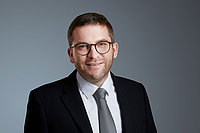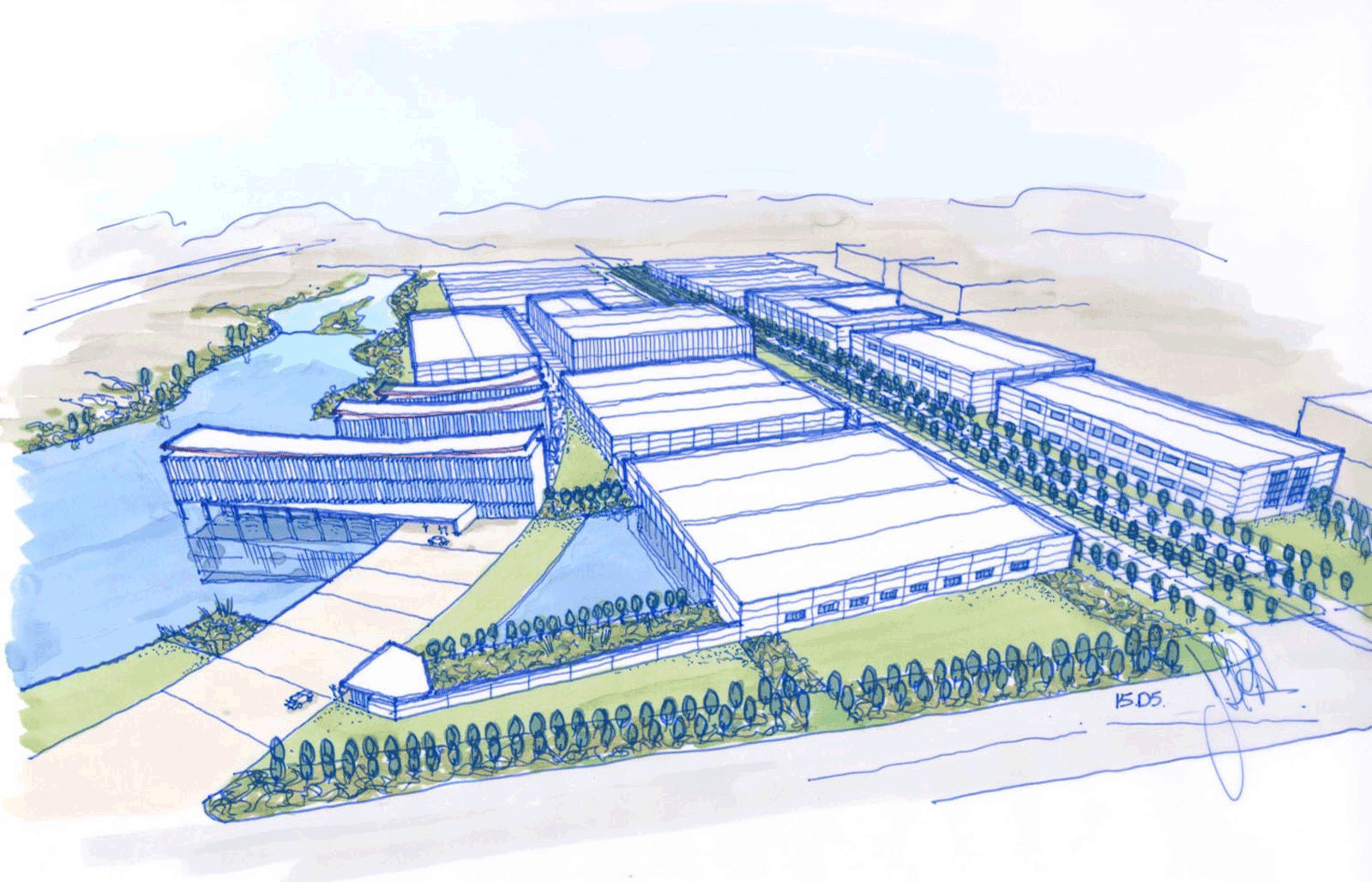Role at io
Markus Seidel’s role as an architect involves him in planning and realizing large industrial building projects. Born in Dresden, he has worked at io in Heidelberg for several years and is currently working on a major lead consultant project with colleagues from logistics and IT for the Häfele Group in the Black Forest.
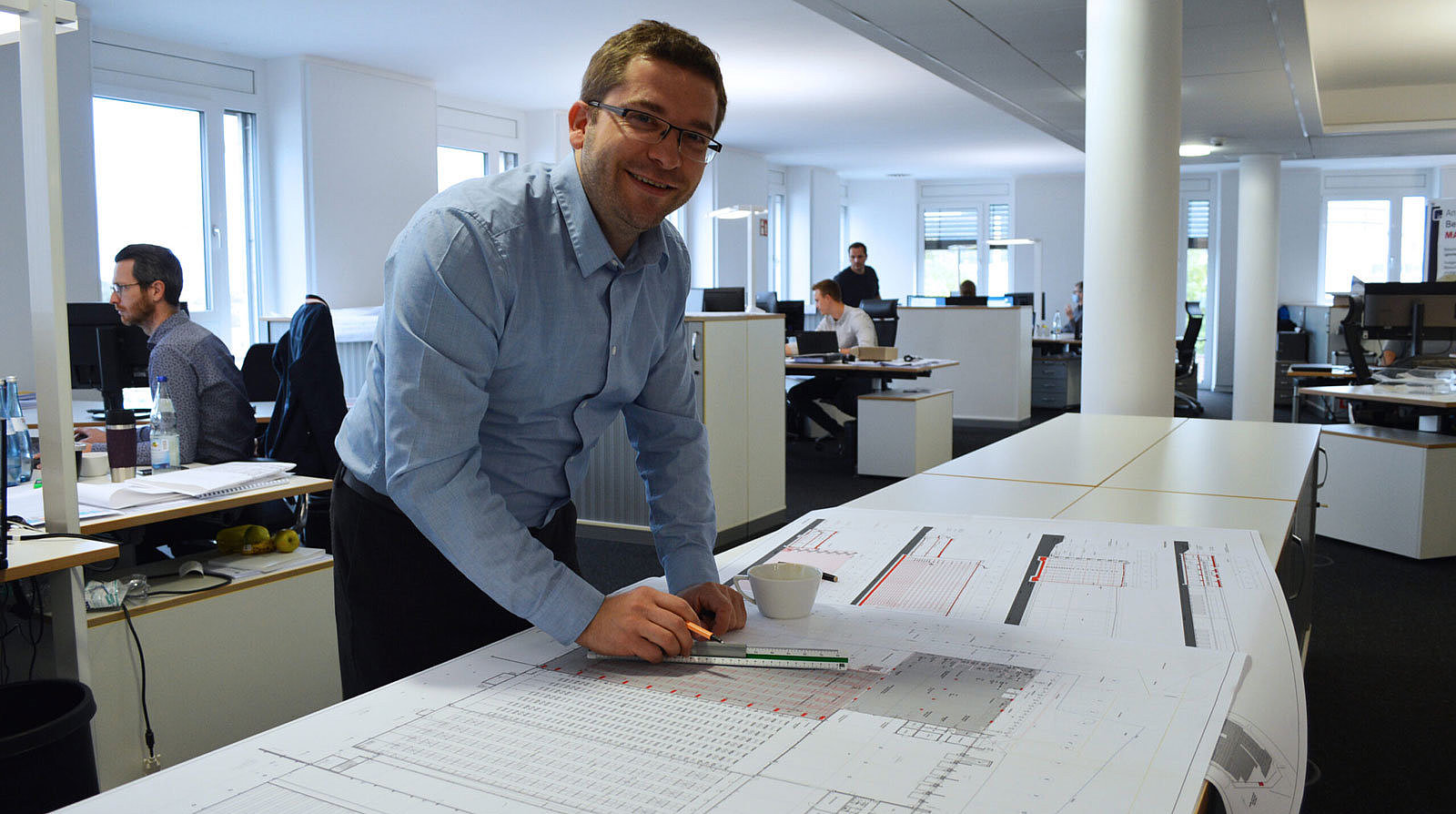
Markus Seidel drawing construction plan at the office
International experience
Markus had already seen much of the world before coming to io. He spent two semesters in the USA during his studies at the Bauhaus University in Weimar, then landed his first job in Shanghai via a master’s internship. “I went there with nothing more than a suitcase, laptop and a positive mindset,” he says, laughing. In his role there as project designer, he planned buildings for offices, other commercial premises, and shopping centers. Many of the projects are now under construction or already completed. At the same time, he was preparing his registration with the German Chamber of Architects – an important milestone that was later to pave the way for his re-entry into the German market.
Markus joined io in Heidelberg
Eight years later, Markus joined io in Heidelberg, after seeing an advert in the German journal Architektenblatt. “I was particularly attracted by the architectural services as a lead consultant and the prospect of working with high-profile clients on large projects.” He was fully absorbed into the Heidelberg team and the project work right from the start. “This helped me broaden my experience very quickly and take on responsibility. Fortunately, my mentor also happened to be the project manager, so I had a friendly ear both personally and professionally.”
I was particularly attracted by the architectural services as a lead consultant and the prospect of working with high-profile clients on large projects.
Holistic industrial construction planing
Industrial construction is a special field of work for architects. “Unlike residential construction or office building design, which are mainly in inner city areas and subject to urban planning constraints, our projects are mostly out of town. The first step, therefore, is to develop a master plan in which we plan buildings of different functions and heights, similar to urban development,” explains Markus. This means the client can make the best possible use of their real estate and expand it in construction stages with an eye to the future.
The architect must understand the basic processes taking place inside the building to be able to design it efficiently. “Having an interest in technology is a distinct advantage,” concludes Markus. Coming up with the perfect structure that takes into account all of the client’s needs means viewing the building and all its related processes as a single system right from the outset.
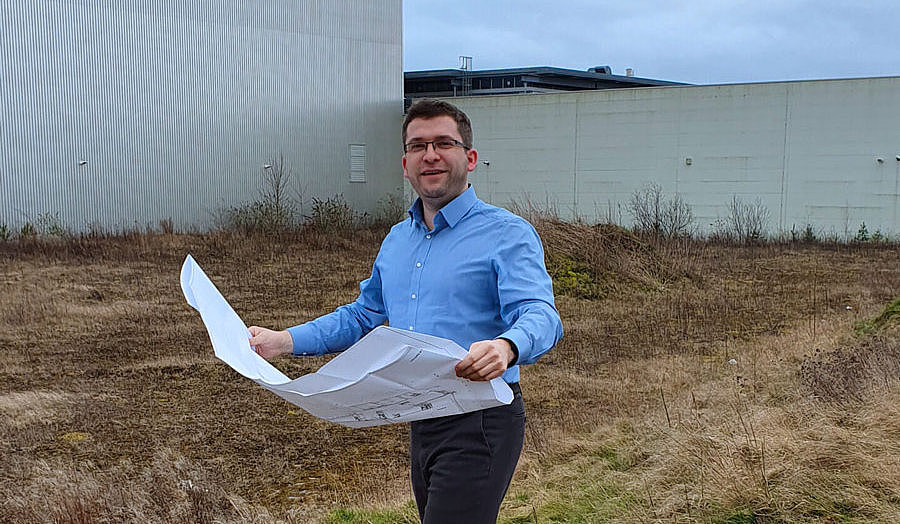
Markus Seidel with construction plan in hand on the Häfele site
Form and function in concert
Form and function in concert – this is the planning approach of io. “In the end, what makes it so exciting is bringing together technical and aesthetic demands.”
Teamworking spans divisions in interdisciplinary teams to incorporate all the different requirements. On top of the team meetings, there is also a weekly round where all the project participants come together. Depending on the type and scope of the project, colleagues from architecture, logistics, pharma/biotech planning, factory planning and IT can be involved, often staying with the project from start to finish. In addition to planning, project management is a cross-departmental service. “Having a dedicated person to liaise between all the involved parties is equally important for the client and ourselves.” The fact that everyone is together in one place means that communication routes are short and agreements can be reached all the more quickly. “We can arrange things over a cup of coffee or by quickly dropping by someone’s office. We have a very distinct and collective mindset of support.”
Each phase brings a new learning curve. And, while everyone has strengths they can focus on, if you come into it with an open mind, you can involve yourself in every stage and further develop your project management skills, for example.
Markus has been involved in the current project at Häfele right from the start. “We began with a user needs assessment, followed by workshops with Häfele to define future usage and space requirements. In the subsequent master planning phase, we arranged these spaces based on the existing buildings and taking the space requirements defined by logistics planning into account.”
The Häfele project comprises several challenging factors: the existing premises are being converted and extended to meet growing needs and ensure future smooth operation, with an additional new building also planned. From the architect’s perspective, this means a wide range of different tasks and constant new challenges. “Each phase brings a new learning curve. And, while everyone has strengths they can focus on, if you come into it with an open mind, you can involve yourself in every stage and further develop your project management skills, for example."
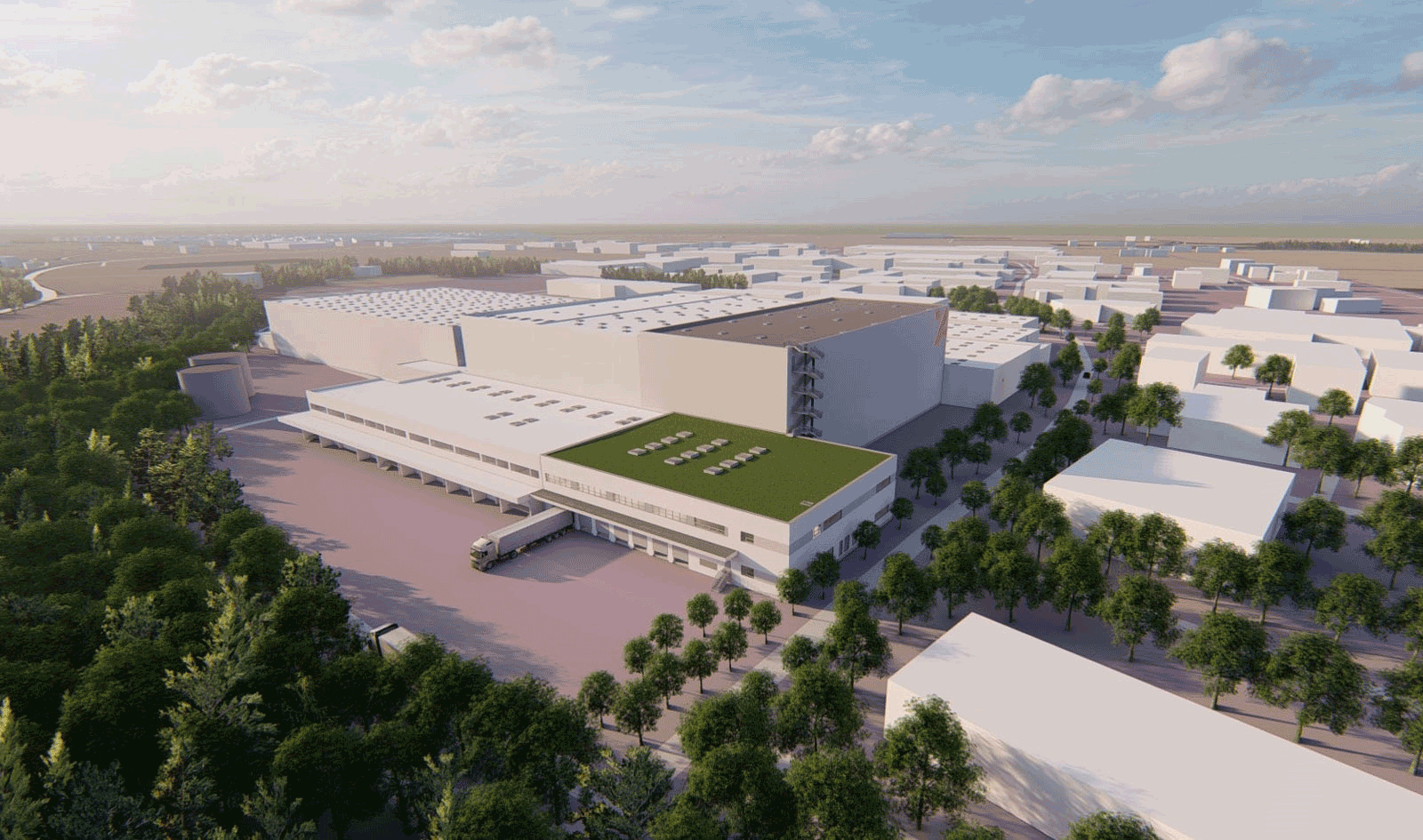
3D model of the Häfele plant from a bird's eye view
We don’t clock in and out at work here. So I am free to organize my work as I wish. In the end, what matters is the result.
Markus is regularly on site for customer appointments and follows the progress up close; usually on one or two days a week – sometimes more, sometimes less, depending on the project phase. “I like alternating between my desk and the construction site. It’s great to see the buildings we designed using Building Information Modeling (BIM) come to life on the construction site,” says Markus with a smile. He finds it easy to combine his job with his private life too; Markus is married with two children. “We don’t clock in and out at work here,” he says. “So I am free to organize my work as I wish. In the end, what matters is the result.”

